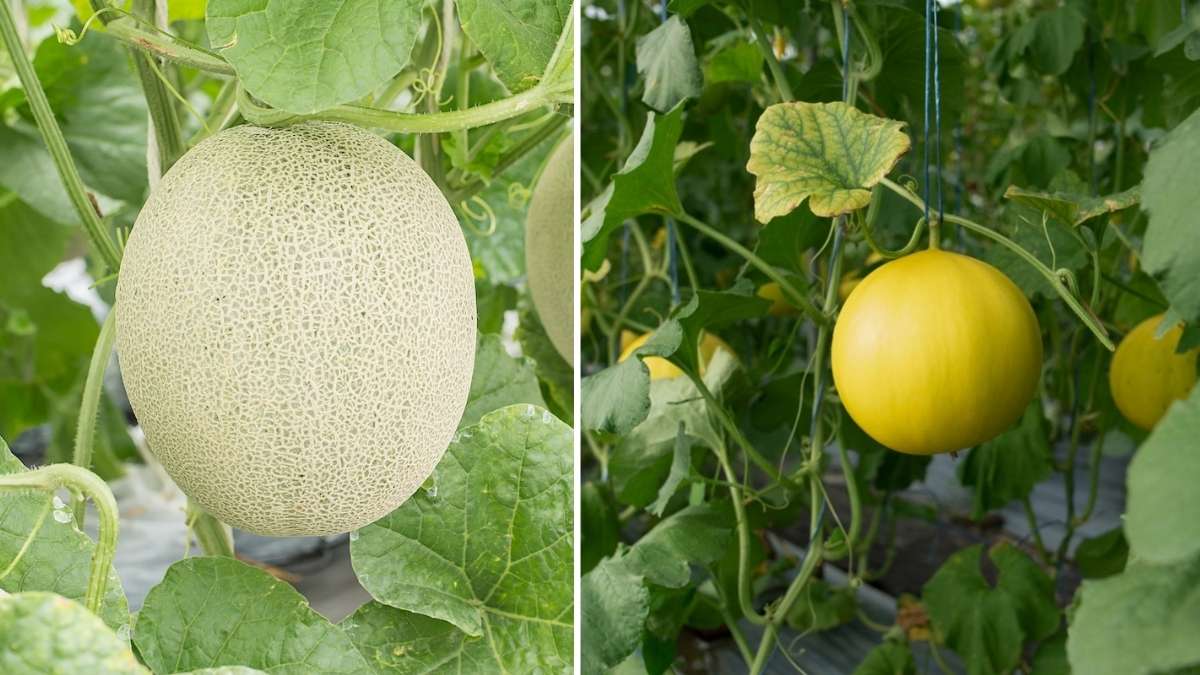There’s nothing quite like the taste of a freshly picked honeydew melon on a warm summer day. Sweet, juicy, and refreshing, this fruit is a favorite among gardeners who enjoy growing their own produce. While honeydew melons require patience and care, the reward is well worth it. With proper soil preparation, regular watering, and enough sunshine, you can enjoy a bountiful harvest of homegrown melons bursting with natural flavor. Here’s a complete 1200-word guide to help you grow juicy honeydew melons in your summer garden.
Understanding the Honeydew Melon
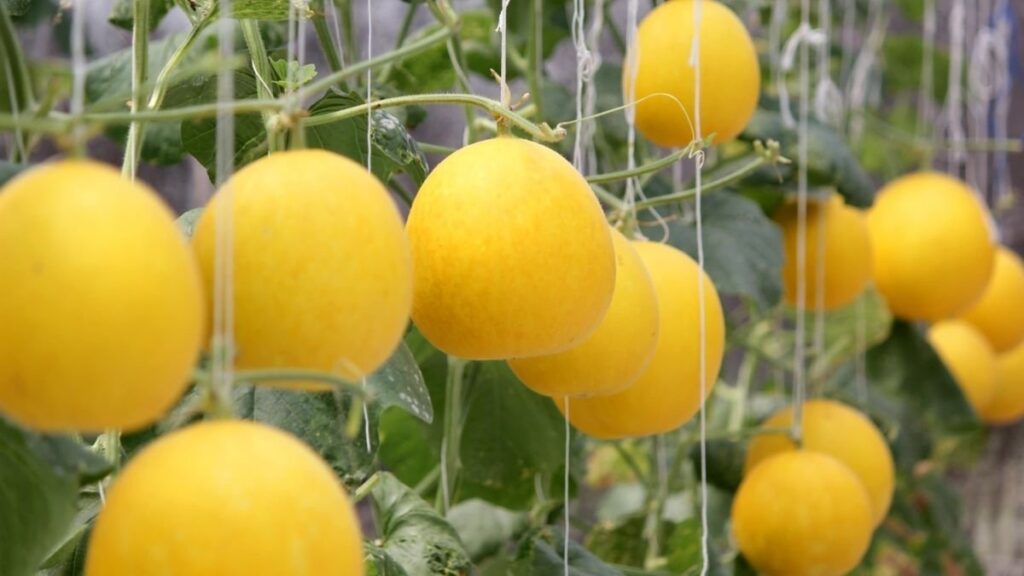
Honeydew melons belong to the muskmelon family, closely related to cantaloupes. They are known for their smooth, pale yellow or green skin and sweet, light-green flesh. Honeydews thrive in hot, dry climates and prefer long, warm growing seasons. Unlike some other melons, they continue to develop their sweetness as they ripen on the vine, which makes timing and care especially important.
These melons are not just delicious they’re also rich in vitamins C and B6, potassium, and antioxidants. Growing them at home ensures you get the freshest and most flavorful fruit without any artificial chemicals or preservatives.
Choosing the Right Variety
Selecting the right honeydew variety is one of the first and most important steps. Different types perform better in certain climates and soil conditions. Consider your local weather, space availability, and the time you can devote to maintenance before choosing a variety.
Some of the most popular and reliable honeydew melon varieties include:
- Green Flesh Honeydew: The traditional type with sweet, juicy flesh and smooth green skin.
- Orange Flesh Honeydew: Offers a tropical aroma and unique orange interior with a rich taste.
- Tam Dew: A fast-maturing hybrid ideal for areas with shorter summers.
- Honey Blonde: Features golden-yellow skin and is resistant to common melon diseases.
- Earlidew: A smaller, early-maturing melon that’s perfect for cooler climates.
If you live in a region with limited summer heat, opt for early-ripening or hybrid varieties designed for shorter growing periods.
Preparing the Soil
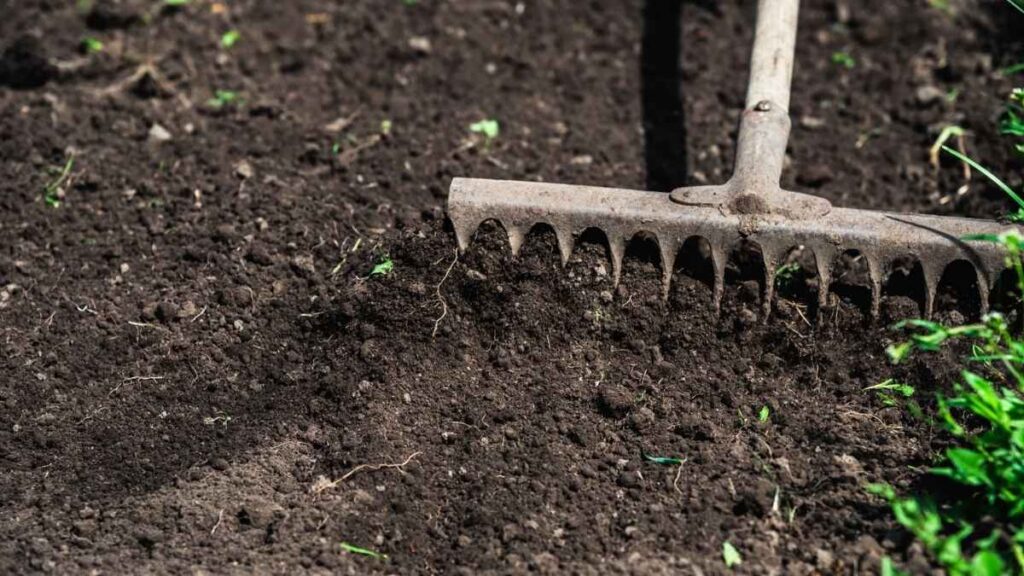
Honeydew melons love rich, well-draining soil that’s slightly acidic to neutral, with a pH between 6.0 and 6.8. Before planting, take time to prepare your garden bed thoroughly. Healthy soil is the foundation for strong vines and sweet fruits.
Here’s how to get your soil ready:
- Clear the area: Remove weeds, rocks, and debris from the planting site.
- Loosen the soil: Dig at least 12 to 15 inches deep to allow roots to spread freely.
- Add organic matter: Mix in compost, well-rotted manure, or organic fertilizer to boost nutrients.
- Ensure proper drainage: If your soil retains water, create raised beds or mounds to prevent root rot.
- Warm the soil: You can cover the area with black plastic a few weeks before planting to retain heat and speed up germination.
Melons thrive in warm soil, so never rush the planting process. Wait until all danger of frost has passed and the ground temperature stays consistently above 65°F (18°C).
Starting from Seeds
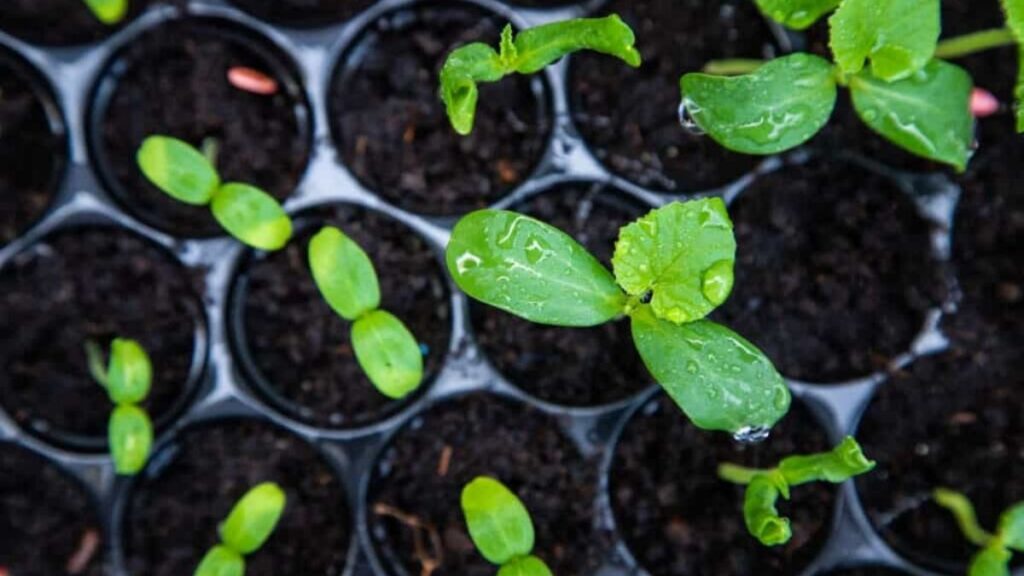
Honeydew melons can be started indoors or planted directly in the garden. The choice depends on your local climate.
If starting seeds indoors:
- Begin 3 to 4 weeks before the last expected frost date.
- Plant seeds in biodegradable pots filled with seed-starting mix.
- Sow them about ½ inch deep and keep the soil moist but not soggy.
- Maintain a temperature around 70°F (21°C) for successful germination.
- Once seedlings have 2–3 true leaves and outdoor conditions are warm, transplant them gently to the garden.
If planting directly outdoors:
- Sow 3–4 seeds per hill, spaced about 2 feet apart.
- Thin to the strongest seedling once plants emerge.
- Keep rows about 4–5 feet apart to give vines enough space to spread.
Mulching around the base will help retain moisture and keep the soil warm, which is vital for melon growth.
Sunlight and Watering Requirements
Honeydew melons thrive in full sunlight. They require at least eight hours of direct sun each day. Without enough sunlight, the fruits may remain small and less sweet.
Sun and water care tips:
- Choose a spot in your garden that receives maximum sunlight.
- Water deeply once or twice a week instead of frequent light watering. This encourages deep root growth.
- Use drip irrigation or water at the base to prevent fungal diseases caused by wet leaves.
- During fruit formation, keep soil evenly moist.
- Once fruits start to mature, slightly reduce watering to increase sweetness and flavor concentration.
Avoid water stress during flowering and early fruit development, as it can lead to poor fruit set or bland taste.
Supporting Healthy Growth
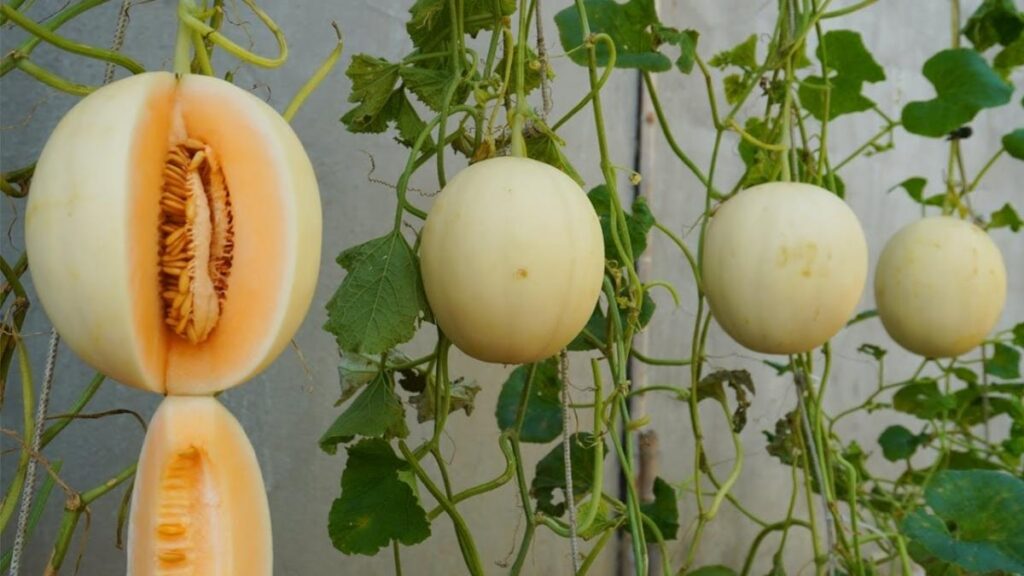
As your vines grow, they’ll begin to spread quickly across the ground. Training and managing them properly helps improve fruit quality and prevents overcrowding.
Here’s how to manage growth effectively:
- Use trellises: Supporting vines vertically improves airflow and keeps fruits off the ground, reducing the risk of rot.
- Pinch off tips: Once the vine has set four or five fruits, pinch the growing tips to redirect energy into ripening existing melons.
- Mulch well: Apply a layer of straw or dried leaves around the plants to maintain soil moisture and suppress weeds.
- Pollination: Bees are essential for pollinating melon flowers. Encourage them by planting nearby flowers or avoiding pesticide use during blooming.
Feeding and Fertilizing
Honeydew melons are heavy feeders and require consistent nutrition throughout the growing season. A balanced feeding schedule ensures vigorous vines and flavorful fruits.
- Before planting: Mix organic compost or slow-release fertilizer into the soil.
- During early growth: Use a nitrogen-rich fertilizer to promote leafy growth.
- At flowering stage: Switch to a fertilizer high in phosphorus and potassium to encourage fruit formation.
- Organic options: Compost tea, fish emulsion, and bone meal are great natural alternatives.
Be cautious not to over-fertilize. Too much nitrogen can cause excessive vine growth at the expense of fruit development.
Pests and Disease Control
Like most melons, honeydews can be affected by pests and diseases, especially in warm, humid conditions. Preventing problems early is easier than curing them later.
Common pests include:
- Aphids
- Cucumber beetles
- Squash bugs
- Spider mites
Prevention tips:
- Inspect plants regularly and remove pests by hand.
- Use neem oil or insecticidal soap as an organic treatment.
- Maintain proper spacing for airflow.
- Water early in the morning to allow foliage to dry by sunset.
- Rotate crops each year to reduce soil-borne disease risks.
Diseases to watch for:
- Powdery mildew (white patches on leaves)
- Downy mildew (yellowing leaves)
- Fusarium wilt (wilting despite adequate water)
Healthy soil, good drainage, and proper watering practices are your best defenses against these issues.
Knowing When and How to Harvest
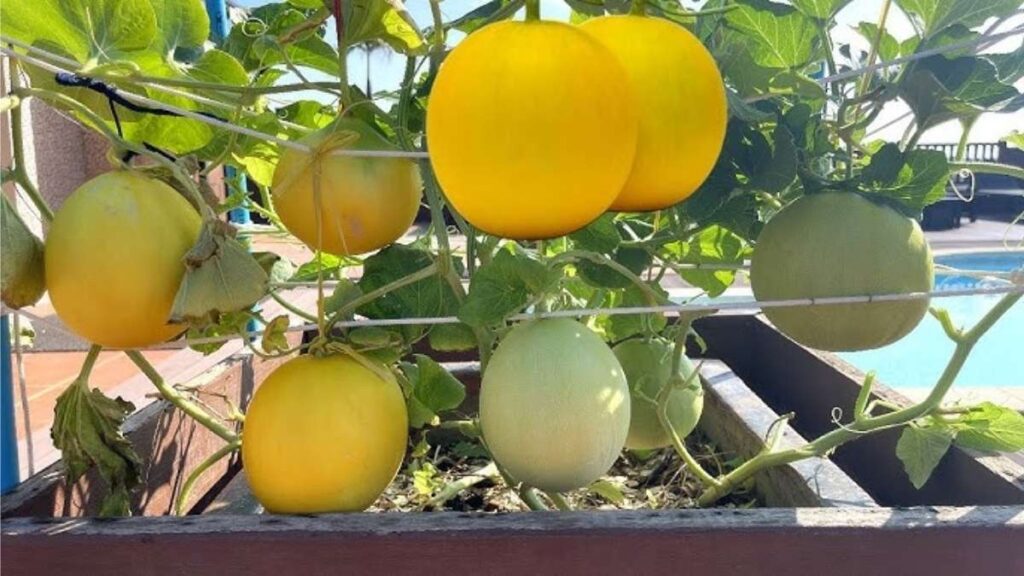
Honeydew melons generally take 80 to 100 days to mature after planting. Harvesting them at the right time ensures maximum sweetness and juiciness.
Here are the signs that your honeydew melon is ripe:
- The skin turns creamy yellow or light gold, depending on the variety.
- The surface feels slightly waxy rather than smooth.
- A gentle press on the blossom end should yield slightly.
- The fruit gives off a sweet, fragrant aroma.
- The stem begins to crack or naturally separates from the vine.
To harvest, use a sharp knife or pruning shears to cut the melon from the vine, leaving about an inch of stem attached. Avoid pulling, as this can damage both the vine and the fruit.
Storing and Enjoying Your Harvest
Freshly picked honeydew melons can be stored at room temperature for a few days to enhance their sweetness. For longer storage, refrigerate them.
Storage tips:
- Keep whole melons at room temperature for 3–4 days.
- Refrigerate uncut melons for up to a week.
- Once cut, cover the pieces tightly and refrigerate for up to 5 days.
Honeydew melon is incredibly versatile. You can enjoy it in fruit salads, smoothies, chilled soups, or as a healthy snack on its own. Try pairing it with mint, lime juice, or prosciutto for a gourmet twist.
Tips for a Successful Honeydew Crop
To keep your honeydew plants productive and healthy, follow these simple yet effective tips:
- Rotate crops each season to prevent disease buildup.
- Keep weeds under control to avoid nutrient competition.
- Mulch generously to conserve moisture.
- Encourage pollinators by planting flowers nearby.
- Monitor for pests regularly and address issues early.
- Harvest only when fully ripe for the sweetest flavor.
Conclusion
Growing honeydew melons in your summer garden is a fulfilling experience that rewards you with sweet, sun-ripened fruits. With the right variety, soil preparation, sunlight, and care, you can cultivate melons that taste far better than anything from the supermarket. Whether you’re an experienced gardener or a beginner, following these practical steps will help you enjoy a successful, juicy harvest.
A patch of honeydew vines in your garden is more than just a crop it’s a symbol of patience, care, and the joy of growing your own food. When you finally slice open that first melon of the season, every moment of tending, watering, and waiting will feel completely worth it.
